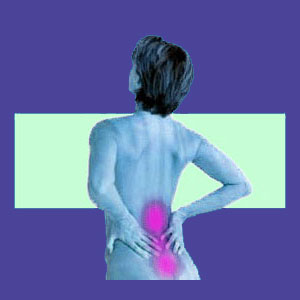
Have you been diagnosed with a herniated disc in the lower back? Life is not over. In fact, there are many important things about herniated discs that you might not know. Despite their reputation as direct causes of lower back pain, most lumbar herniated discs are actually completely asymptomatic. This truth has been well known and supported by research and clinical medicine for decades already. The reasons why the mythology of inherent herniated disc pathology continues to be propagated show the darkest side of the medical business sector.
Herniated discs are truly the most misunderstood of all spinal abnormities. This is ironic, considering how commonplace they are and how so many people have them. It almost seems as if people do not want to learn the truth about disc conditions, but would rather accept them as a cause of all of life’s sufferings, when in fact, they are rarely to blame for anything at all. Don’t get us wrong… There are times when herniated discs can be problematic and symptomatic. However, these circumstances represent the minority of diagnosed disc issues and even then, are highly unlikely to cause chronic lower back pain.
This vital dialog provides a completely new look at herniated discs in the lower back. We will discuss their incidence and focus on why these basically normal spinal aging signs have such a nasty reputation.
Incidence of Herniated Discs in the Lower Back
We now know that bulging and herniated discs in the lumbar spine occur in the majority of people. Some are transient bulges that return to normal shape after a time, while other discs are permanently changed in symmetry and structure. In fact, doctors know that the intervertebral discs are in a continual state of change structurally, in response to both real time stresses that alter their shape, as well as cumulative deterioration from age and the effects of these stresses.
Most herniated discs are not diagnosed, since they do not produce pain and are therefore never screened for. We do see a huge incidence of herniated discs that are discovered inadvertently when testing for some other unrelated condition.
Diagnosed herniated discs are usually related to a lower back pain complaint. This is no surprise since more than 85% of adults in developed countries complain of serious low back pain at some point in life. The fact that pain exists in tandem with a herniated disc does not inherently place the blame for said suffering on the disc. This is a fact that every patient should know, although few actually realize its importance. Since most people do not understand the normally asymptomatic nature of intervertebral herniations, they are placed into treatment for the condition when the disc is usually not the source of their pain. This directly explains why so many disc therapies fail to deliver satisfying outcomes and why so many people honestly feel that they are suffering for years, or even decades, from a herniated disc in the lower back: an idea that goes against virtually all scientific knowledge!
The latest evidence gathered across research and clinical medicine suggests that slightly less than 10% of all herniated discs have symptomatic potential. Of these, about half will resolve organically, creating pain for a short time and then healing. This leaves less than 5% of all herniations that actually may require medical treatment. Of this number only about 1% to 2% are indicated for surgery, although surgery is almost never considered the one and only therapeutic option.
Lumbar Herniated Disc Myths and Facts
Herniated discs are certainly not inherently painful. This idea is myth which is propagated mostly by greedy or clueless caregivers who do not want to relinquish decades of profitability simply for the sake of objective truth.
Herniated disc are ultra-common. The vast majority are found in people who do not currently have low back pain, nor even know that the herniation is present.
Herniated discs in the lower back do not inherently require surgery, nor do they inherently benefit from it. Surgery is only medical indicated in 1% to 2% of all herniated discs, and is virtually never considered medically necessary, nor even the best option for therapy when compared to more enlightened, less risky conservative care. We have only seen a literal handful of cases over the past 15 years + where surgery was truly an emergency requirement. Comparatively, we have seen millions of cases where surgery was not needed, not successful, and not wanted, but was performed regardless, with abysmal results. Herniated disc procedures constitute the majority of all failed lower back surgery blunders.
Herniated discs can cause pain and this is a fact. They can compress the spinal cord or cauda equina in the central spinal canal, especially in combination when arthritic forms of stenosis are already in effect. Similarly, herniated discs can compress individual nerve roots within the lateral recesses or the foraminal spaces. Far lateral herniations can even compress nerves extraforaminally. Herniated discs can also rupture and leak irritating proteins onto nerve tissue, enacting a condition known as chemical radiculitis. However, we must stress once again (and again and again…) that all of these case profiles represent the extreme minority of disc abnormalities.
Herniated Disc in the Lower Back Patient Guide
You are now learning the facts about lumbar herniated discs. This is incredibly important. The knowledge you gain will serve you better than any other tool in your quest for relief. Remember that no one is doubting your pain. Lower back dorsalgia is a terrible and epidemic occurrence that affects so many of us, myself included. However, even with 12 herniated discs, I have found relief and some of my disc issues might actually be pathological exceptions to the rule. I just want you to successfully decrease your pain and pursuing herniated disc care is most often statistically a waste of time.
It should be noted that there are treatment options for patients who are not sure about the validity of a herniated disc diagnosis, but are not ready to dismiss the conclusion either. Surgery is not your only possible path. Nonsurgical spinal decompression, using one of the many available systems, such as the DRX9000, AccuSpina, Vax-D, Antalgic Trak or even traditional Cox chiropractic decompression can all provide cures for (very rare) symptomatic herniated discs. If you do not want to believe the established facts yet, at least do not set yourself up for unnecessary surgical butchery when conservative care demonstrates better treatment outcomes.
A final note to the patients who write to us stating that they had surgery a month ago for a herniated disc and now feel much better: Reserve your judgment on the need and effectiveness of the procedure for a while. Do not insist that you needed surgery and how great it all was a few weeks later. As a counterpoint, we can show you literally hundreds of thousands of letters and emails that support our position. These letters come from people just like you who had surgery, felt better (some felt immediately worse), but the pain returned. In most cases, the pain was worse than before and was misdiagnosed over and over again, resulting in additional unnecessary surgeries, just like the first one. The facts tell that success rates for herniated disc surgeries over timeline of 7 years are in the single digits. Additionally, we feel that the results would not even be that good (if you can call it good), if it was not for the substantial benefit of surgical placebo effect and the very high incidence where the pain moves elsewhere as a substitute back pain symptom and is therefore not even attributed to the same origin as the original disc complaint.
Lower Back Pain > Lumbar Herniated Disc > Herniated Disc in the Lower Back





